(Psst: The FTC wants me to remind you that this website contains affiliate links. That means if you make a purchase from a link you click on, I might receive a small commission. This does not increase the price you’ll pay for that item nor does it decrease the awesomeness of the item. ~ Daisy)
How can we repurpose simple household items to help in our garden? Let me count the ways! I’ve written about some things here, but there are so many more! In this article, I’ll focus on food containers and their potential uses.
Why waste a perfectly good container?
We have to buy the food anyway, right?
Milk jugs
I wrote about these in the above-referenced article. They make great season extenders, cloches, mixers, and measurers. You can also plant in them! Just poke a few holes in the bottom for drainage, then hang them to turn that useless wall space into a vertical garden. Make lots of holes, then bury them near your plants for use as a drip watering system. Cut a hole in the side and hang them in a tree as a birdhouse. Paint and decorate them for added beauty.
Soda bottles
Soda pop bottles are also quite useful! In addition to cloches and winter sowing, hanging them upside down on a post creates is a useful way to grow greens and herbs. Make holes in the sides, then hang horizontally on a wall and fill with soil. A once-bare wall is now a vertical garden! They can be made into hanging baskets for growing cacti and flowers or attached to an old ladder as a vertical garden. Bottles of all kinds can be hung on a wire fence or just put on a shelf. Check out this blog for some inspiration pictures.
Another way soda bottles are useful: hydroponics! Cut the top off, invert, and replace into the bottle. Use some contact cement if necessary to hold the two parts firmly together. This makes a Kratky jar. Fill the reservoir with nutrient solution and place an old clean rag or towel into the funnel as a wick, then plant the top using either potting mix, coco coir, or rock wool. Kratky jars have their quirks, so I wouldn’t try something that will require the replacement of the nutrient solution, such as tomatoes. Also, root crops such as potatoes don’t grow well in hydroponics because the tubers will break the reservoir. Greens and herbs work well, however, and short-time-to-maturity items such as radish greens might work.
Yogurt and cottage cheese containers
Yogurt cups and cottage cheese containers can also be useful as measuring cups. Larger containers can be used as seed starting pots or cut for use as watering collars. Watering collars help maximize watering efficiency in the garden. Plant your seedling inside of the collar, then fill the collar at watering time. Smaller yogurt containers work well as seed-starting pots. Remember to poke a hole in the bottom for drainage!
Plastic cutlery
Use plastic utensils such as spoons and knives as labels.
Egg cartons
Egg cartons make useful seed starters! While too small to hold plants for long, seeds can be germinated and transplanted once successfully established. Put a hydrated Jiffy pellet into each space, plant your seed, water, and close the lid to keep heat and humidity in! Be sure to check on your seeds frequently. Once sprouted they’ll need the light to grow. You can also cut the bottom of the carton off for use as a stabilizer and cover the top with saran wrap.
Plastic food containers
Food containers of all sizes with lids can be used for seed starting as well! Whether it’s a plastic container that originally held lunch meat or a larger meal to go, these containers work very well to germinate seeds.
I’m a paper towel woman. I prefer to plant germinated seeds. In the past I’ve used lids carefully covered in saran wrap, then had this idea to use my old food containers. So I fold and wet the paper towel, then seed it and place it in the container. The tight-fitting lid makes an excellent humidity dome and the heat mat keeps things warm! I have learned to check every day and re-moisten the paper towel as required. Surprisingly, condensation on the lid doesn’t necessarily mean the paper towel is properly moist! A seedling that was germinating will die in a dry paper towel, so keeping the towel moist is important.
Ice cream tubs
How about those ice cream buckets? Those can be used to measure larger quantities, mix soil from different areas for soil testing, and transporting smaller amounts of fertilizers and pesticides.
I use a pint ball jar to transport liquid fertilizer to my community garden plot and a half-gallon milk jug to carry water from my five-gallon buckets to the individual plants. This makes watering much easier, and it’s easier to pour into the watering collars. The repurposed food bucket is great for hauling water from the tote but doesn’t work so well for efficiently watering individual plants, especially when collars are in use.
Ice cream buckets will also serve as cloches. Paint them black, fill with water, and place around the garden to absorb heat during the day. That heat will be released overnight, just as a milk jug would do, raising the temperature around the plant enough to keep frost damage away. This works especially well under an old bed sheet cover. And of course, they can be planted!
Food containers are a boon to frugal gardeners!
So many household items can be repurposed for the garden!
Food containers of all shapes and sizes are especially useful. How do you use them in your garden? What else do you repurpose in the garden? Please tell us in the comments section!
About Amy Allen
Amy Allen is a professional bookworm and student of Life, the Universe, and Everything. She’s also a Master Gardener with a BS in biology, and has been growing food on her small urban lot since 2010.
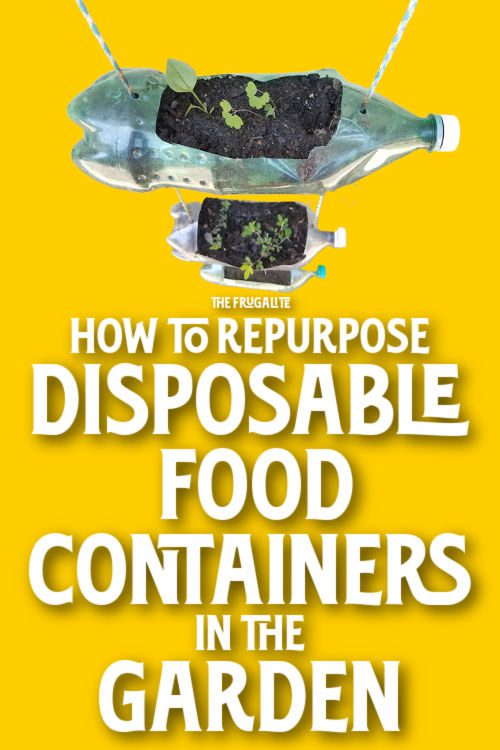

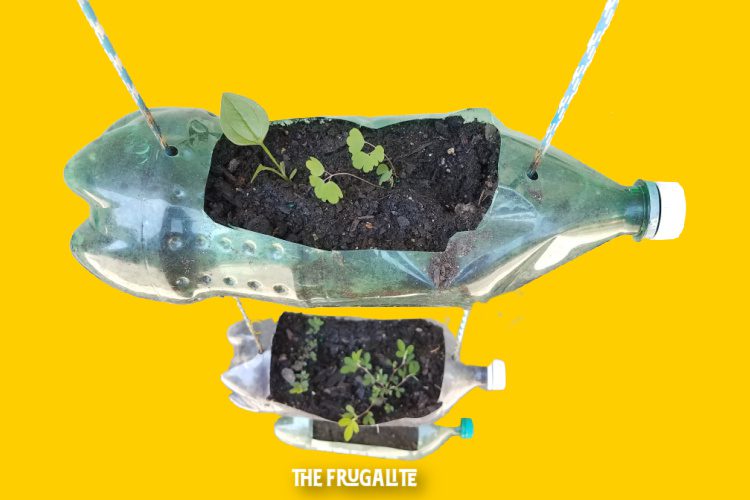




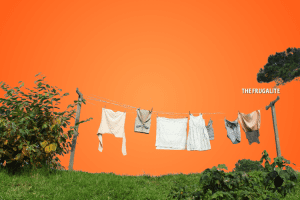
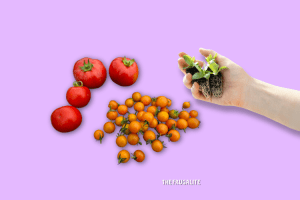

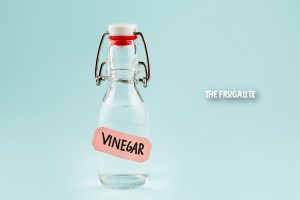

2 thoughts on “How to Repurpose Disposable Food Containers in the Garden”
I love these and have used a lot of the ideas. Food containers and old lids also make good drip catchers for under improvised pots, helpful to avoid water damage if you are gardening indoors. Also, regular dirt inside an egg carton rather than a Jiffy pellet is not only cheaper but a bit more nutritious for the developing seed. Even if you have to buy a bag of seed starter mix it is likely to be less costly than the pellets.
Another use for egg cartons is to hold seed potatoes when you are chitting them. That is, when you have some nice sprouts on your seed potato and you want to hold them upright in the light so they can form better sprouts. They are perfect for this use!
I no longer buy small pots for starting, red Solo cups or similar disposable cups are my new standard and the more durable ones can be reused.
Excellent article and right down my alley!
My husband’s grandmother was an excellent and very practical gardener. She kept a small vegetable garden and tended her flowers until she was in her 90s. From her I learned to take a tall metal juice can (the kind that V-8 used to come in), poke holes in the bottom of it with a nail or a drill bit, fill it half full of small rocks, and bury it between tomato plants, leaving about 3 inches of the rim above the soil. Then when watering the tomatoes, she’d just put the hose down in the can and the water would go straight to the roots.